Tips for Choosing the Right Massage Therapist
August 18, 2025
14 min

Why Choosing the Right Massage Therapist Matters
Selecting the right massage therapist is key to achieving your wellness goals, whether for relaxation, pain management, or injury recovery. With a vast range of massage modalities and therapist expertise available, making an informed choice ensures you receive effective, personalized care in a professional and comfortable setting.
Key Facts on Choosing and Evaluating Massage Therapists
- Licensed massage therapists have undergone rigorous training and adhere to professional standards ensuring safety and quality.
- Verify credentials and licenses through official state databases or recognized organizations like AMTA or ABMP.
- Specialized techniques such as Deep Tissue, Sports, and Reflexology target specific health outcomes like injury recovery, performance, and wellness.
- Years of practice and ongoing education enhance a therapist’s skills, improving client outcomes and treatment effectiveness.
- Building trust and comfort relies on open dialogue, assessing compatibility, and professionalism during sessions.
- Choosing a clinic-based environment ensures cleanliness, structured treatment plans, and post-massage support.
- Always verify active licensure, certifications, and check for any disciplinary records to ensure professionalism.
- Evaluate a therapist’s experience, specialization, and client feedback to select a qualified practitioner.
- Ask about treatment customization, therapist expertise in techniques, and safety measures to ensure personalized care.
- Understanding different massage modalities allows you to align techniques like Swedish or Deep Tissue with your health goals.
1. Licensed Massage Therapists: The Foundation of Professional Care

Importance of licensing and certification
Choosing a licensed massage therapist is essential for ensuring safe and effective treatment. Licensed therapists have undergone rigorous training and adhere to professional standards, which reduces the risk of adverse effects and guarantees a higher level of care.
Verification of credentials
Always verify your therapist’s credentials before booking a session. Check for state-issued licenses or certifications from recognized organizations. It’s a good practice to confirm that the license is active and that the therapist is in good standing.
Qualifications and ongoing education
Qualified therapists typically possess comprehensive education, often exceeding 1,000 hours of training. The most reputable practitioners also engage in continuous learning through workshops and advanced certifications, which keep them updated on new techniques and best practices.
State licensing requirements and exams
Most states require massage therapists to pass specific licensing exams that test their knowledge of anatomy, physiology, ethics, and safety protocols. For example, in New York, therapists must complete at least 1,000 hours of education and pass a licensing exam.
Professional organization memberships such as AMTA and ABMP
Many qualified massage therapists are members of professional organizations such as the American Massage Therapy Association (AMTA) or the Associated Bodywork & Massage Professionals (ABMP). These memberships often indicate a commitment to ongoing education, ethical practice, and professional development.
Ensuring therapists meet official standards
To ensure your therapist meets industry standards, look for certifications, licenses, and memberships in reputable organizations. Additionally, ask about their training, specialties, and experience. Reliable practitioners are transparent about their qualifications and continuous education efforts.
Having a licensed and certified massage therapist provides reassurance of quality, professionalism, and safety, making your massage experience both effective and trustworthy.
2. Specialized Massage Therapists: Tailoring Techniques to Your Needs

Different massage modalities: Swedish, Deep Tissue, Sports, Reflexology, Thai, and others
There is a wide range of massage techniques, each designed to target specific health outcomes and personal preferences. Swedish massage features gentle, flowing strokes aimed at relaxation and easing mild tension. Deep Tissue massage targets deeper muscle layers, helping to relieve chronic aches and aid injury recovery. Sports massage is tailored for athletes, focusing on enhancing performance and preventing injuries. Reflexology applies pressure to specific points on the feet, hands, or ears to influence organ health and promote overall wellness. Thai massage involves vigorous stretching, muscle compression, and joint manipulation to increase flexibility and energy flow. Other popular therapies include Hot Stone, Aromatherapy, Cupping, and Craniosacral Therapy, each offering unique benefits.
Matching therapist specialization to health goals like relaxation, pain relief, or athletic recovery
Your choice of therapist should align with your main health aims. For relaxation and stress reduction, a practitioner experienced in Swedish or Aromatherapy massage can be most effective. If chronic pain, muscle tightness, or injury recovery are your goals, Deep Tissue or Myofascial Release techniques may serve you better. Athletes or those seeking enhanced mobility can benefit from Sports Massage, which focuses on flexibility and injury prevention. For holistic energy balance, Reflexology or Thai Massage can provide additional benefits. Clarifying your goals helps in selecting a therapist who specializes in the right techniques to meet your needs.
Evaluating expertise in specific techniques
When choosing a massage professional, review their experience and expertise in relevant techniques. A therapist trained in multiple modalities can adapt their approach to your evolving needs. Look for detailed credentials, including certifications in specialized massage methods or advanced training in niche therapies like cupping or craniosacral therapy. A seasoned therapist will understand how to adjust pressure, technique, and session focus to optimize outcomes.
Special certifications or additional training in niche therapies
Continuing education and certification in specific massage styles add credibility and skill. For example, certification in Sports Massage, Myofascial Release, or Lymphatic Drainage shows advanced competence. Some therapists also pursue training in niche areas like CBD Oil integration, which can enhance relaxation and pain relief. Ensuring your practitioner has proper qualifications ensures that you benefit from safe and targeted treatments.
How specializations affect treatment outcomes
The right specialization can significantly improve the effectiveness of your therapy. For example, a therapist trained specifically in Deep Tissue massage can better isolate and release chronic muscle knots. An expert in Reflexology might better stimulate nerve pathways to boost energy and reduce stress. When a therapist's skills align with your specific health concerns, you are more likely to experience relief, increased mobility, and overall well-being. Ensuring your therapist’s expertise matches your goals maximizes the value of each session.
3. Experienced Massage Therapists: Assessing Skill Through Practice and Client Feedback

How does years of practice and ongoing professional development impact a therapist’s skill?
A massage therapist’s experience is an important indicator of their competence. Therapists with several years in the field have typically refined their techniques, understanding of the anatomy, and ability to tailor sessions to individual needs. Continuous education and specialized training, like certifications in deep tissue or sports massage, further enhance their skills.
In what ways does experience influence client outcomes?
More experienced therapists tend to better recognize specific muscle tension patterns and respond appropriately. This can lead to more effective pain relief, reduced recovery times, and improved overall satisfaction. Their familiarity with diverse conditions and client responses allows them to customize treatments, making sessions more beneficial.
Why is ongoing training essential for massage therapists?
The field of massage therapy continually evolves with new techniques and scientific insights. Therapists who pursue ongoing education stay current with best practices, safety protocols, and innovative methods. This ongoing development improves treatment quality and ensures clients receive current, safe, and effective care.
How can client testimonials and success stories aid in assessing a therapist’s expertise?
Reviews and testimonials provide real-world insights into a therapist’s ability to deliver results. Positive feedback on pain reduction, relaxation, or improved mobility can confirm technical proficiency. Stories of success, especially in addressing specific issues, help prospective clients gauge whether a practitioner can meet their needs.
Why is it important to consider a therapist's experience with particular health conditions or client groups?
Certain health conditions—such as chronic pain, injuries, or pregnancy—require specialized knowledge. Therapists with experience working with these populations are more likely to provide safe, effective treatments. Their familiarity with contraindications and tailored approaches ensures better outcomes and minimizes risks.
| Aspect | What to Look For | Why It Matters |
|---|---|---|
| Years of Practice | 5+ years of experience | Indicates well-rounded expertise |
| Certifications & Ongoing Education | Specialization courses & recent training | Reflects current knowledge and skills |
| Client Feedback | Positive reviews related to specific needs | Demonstrates proven success |
| Population Experience | Work with specific conditions or groups | Ensures tailored, safe treatment |
Assessing a massage therapist's experience is crucial for making an informed choice. Prioritize those with substantial practice, relevant training, and positive client experiences to maximize the benefits and achieve your wellness goals.
4. Communicative and Compatible Massage Therapists: Building Trust and Comfort
Importance of open dialogue before and during sessions
Effective massage therapy starts with clear communication. Before the massage begins, discuss your goals—whether it’s relaxation, pain relief, or improving mobility. During the session, don’t hesitate to share feedback about the pressure, areas of discomfort, or specific preferences. This openness helps the therapist tailor the treatment to your needs and ensures a more effective and comfortable experience.
Assessing personal compatibility and therapist empathy
A good therapist is also someone you feel comfortable with and who shows genuine empathy. Assess their attitude by observing their tone, attentiveness, and willingness to listen. A therapist who makes you feel at ease, respects your boundaries, and demonstrates understanding fosters a trusting environment vital for healing.
How therapists customize sessions based on client preferences
Therapists should ask about your health history, symptoms, and goals beforehand. Based on this information, they can select techniques that suit your needs—whether gentle Swedish strokes or deeper tissue work. A sympathetic therapist will adapt the session in real-time, adjusting pressure and focus areas to maximize benefits.
Observing therapist’s responsiveness and professionalism
During your session, watch for responsiveness—does the therapist check in about the pressure and comfort? Do they maintain professionalism and attentive care? Professional therapists are respectful, maintain good hygiene, and are focused on providing relief and relaxation without rushing or causing discomfort.
Ensuring comfort and respectful boundaries during massage
Your comfort is paramount. Ensure the therapist uses proper draping techniques to maintain modesty and only works on areas you’ve consented to. Feel free to voice any discomfort or request adjustments. Respectful boundaries, open communication, and a supportive atmosphere are essential for a positive massage experience.
5. Clinic-Based Massage Therapists: Professional Environments that Enhance Healing
When selecting a massage therapist, opting for a professional, clinic-based environment can significantly enhance your healing experience. These settings are designed to ensure cleanliness, professionalism, and a focus on health, creating a safe space for treatment.
Assess the condition of the treatment area, checking for overall cleanliness, organized space, and proper sanitation practices. Staff should be courteous, well-trained, and attentive, providing any necessary information about procedures and precautions. The ambiance should promote relaxation and comfort, supporting a positive therapeutic experience.
A structured treatment plan is vital for achieving your wellness goals. Reputable clinics develop personalized schedules, often including multiple sessions, with clear milestones to measure your progress. Regular evaluation allows adjustments to the therapy approach, optimizing results and addressing emerging needs.
Post-massage support is also an important aspect of quality care. This can include advice on stretching, exercises, or lifestyle modifications to maintain benefits. A dedicated therapist will often follow up or recommend additional therapies if necessary, ensuring ongoing support for your health.
Convenience factors such as location, flexible scheduling, and client-oriented services influence your ability to maintain consistency. Clinics that offer online booking, extended hours, and tailored packages make it easier to fit sessions into busy lifestyles. Overall, choosing a therapist in a well-organized, professional setting ensures a safer, more effective, and supportive healing journey.
Verifying Professionalism and Licensing of Massage Therapists
 When choosing a massage therapist, confirming their credentials and professionalism is essential for ensuring quality care and safety.
When choosing a massage therapist, confirming their credentials and professionalism is essential for ensuring quality care and safety.
The first step is to verify whether the therapist holds an active license issued by the licensing authority in their state. Most states provide online databases where you can look up a license easily, such as the "Look up a License®" portal sponsored by FARB or equivalent. These platforms typically confirm if the therapist has met necessary education requirements, completed certification exams like the MBLEx, and maintains current certifications in CPR and first aid.
It’s also important to review if the therapist has a clean disciplinary record. Public records often list any complaints or license revocations, helping you avoid practitioners with professional issues. Reputable organizations like the American Massage Therapy Association (AMTA) or Associated Bodywork & Massage Professionals (ABMP) require members to uphold high standards, including ongoing education and ethical conduct.
Contacting the licensing board directly or using official online verification tools can give you additional assurance that the therapist’s credentials are current and valid. Ensuring your practitioner is qualified minimizes risks and enhances your therapy experience.
To summarize:
| Verification Step | What to Check | Why It Matters |
|---|---|---|
| Active License Verification | State licensing database | Ensures legal practice and legitimacy |
| Education & Certification | Training hours, exam completion | Confirms proper training |
| Disciplinary Record | Complaints, licensure issues | Avoids unprofessional behavior |
| Membership in Professional Associations | AMTA, ABMP | Indicates commitment to standards |
Always ask your therapist about their credentials and experience before your session. Proper verification leads to a safer, more effective massage experience and peace of mind.
Evaluating Qualifications and Credentials of a Massage Therapist

How can I evaluate the qualifications and credentials of a massage therapist?
Assessing a massage therapist's qualifications is essential to ensure you receive safe and effective treatment. Begin by confirming their licensure through official state regulatory websites such as Look up a License®, managed by the Federation of Associations of Regulatory Boards (FARB). This online registry allows you to verify if the therapist is licensed, check their license status, renewal history, and see if there have been any disciplinary actions.
In addition to licensing, review whether the therapist holds certifications from recognized organizations like the California Massage Therapy Council (CAMTC) or other reputable bodies. These certifications demonstrate that the therapist has undergone specific training standards and continues to meet professional requirements.
Check their records for ongoing education or continuing training, which indicates a commitment to staying current with new techniques and practices. Make sure the therapist complies with state-specific requirements, such as background checks or additional certifications.
Lastly, seek recommendations or references from previous clients or trusted healthcare providers. Client reviews can offer insights into the therapist’s professionalism, experience, and ability to customize treatments effectively.
Verifying these aspects helps you choose a qualified, trustworthy professional capable of addressing your specific health needs.
Making an Informed Decision When Choosing a Massage Therapist
What factors should I consider to make an informed decision when choosing a massage therapist?
Choosing the right massage therapist requires careful consideration of multiple aspects. First, verify their credentials, including licensing, certifications, and any specialized training. Licensed therapists have met professional standards and are trained to provide safe, effective treatments.
Experience and expertise in specific massage types—such as deep tissue, Swedish, or sports massage—are vital, especially if you have particular conditions or goals. Checking client reviews and seeking recommendations from healthcare providers or trusted friends can help gauge a therapist's reputation.
Effective communication skills are crucial for a good therapeutic experience. A qualified therapist should discuss your health history, symptoms, and goals. They should collaborate with you to create a personalized plan, adjusting techniques based on your feedback.
Assess the clinic environment for cleanliness, professionalism, and comfort. A well-maintained, welcoming space enhances relaxation and healing.
Practical considerations such as location, appointment availability, and pricing are also important. Accessibility and flexible scheduling allow you to build a consistent treatment plan.
If your goal is therapeutic, ensure the therapist's approach aligns with your needs—whether pain relief, stress reduction, or increasing mobility. Selecting a therapist with the appropriate specialization maximizes benefits.
Putting all these factors together—certifications, experience, communication, environment, and suitability—will guide you toward a therapist who can provide safe, personalized, and effective care, helping you reach your wellness goals.
Selecting Suitable Massage Modalities Based on Individual Needs
Understanding different massage types and purposes
There are many styles of massage therapy, each tailored to different needs and health goals. Swedish massage involves gentle, flowing strokes meant to promote relaxation and improve blood flow. Deep Tissue massage targets deeper muscle layers, helping to alleviate chronic aches or recover from injuries. For athletes, Sports Massage enhances performance and reduces injury risk, while Reflexology applies pressure to specific points on the feet, hands, or ears to support overall wellness.
Other therapies include Thai massage, which combines stretching with acupressure for increased flexibility and energy balance, and Aromatherapy massage that uses scented oils to promote relaxation on a sensory level. Hot Stone therapy, Cupping, Craniosacral therapy, and Myofascial Release are additional options, each addressing specific concerns such as tension, inflammation, or energy flow.
Matching massage styles to goals like relaxation or pain relief
Choosing the right modality depends on your personal health objectives. If the goal is pure relaxation and stress reduction, Swedish massage or Aromatherapy might be best. For relieving pain, chronic discomfort, or muscle tightness, options like Deep Tissue, Myofascial Release, or Cupping are more suitable.
Athletes or those seeking to boost flexibility should consider Sports Massage, which helps prevent injuries and aids recovery. Therapies like Reflexology and Shiatsu are ideal for promoting holistic health, calming the nervous system, and improving energy balance.
Consulting therapists to customize modalities
Before your session, consulting with a licensed massage therapist is essential. They can evaluate your health history, discuss your goals, and recommend the most suitable techniques. Effective communication about your preferences, health concerns, and desired outcomes helps tailor the treatment.
Therapists often combine multiple techniques during a session to address different needs, such as blending Swedish with Deep Tissue or incorporating energy therapies. Your input ensures the therapy is customized and safe.
Knowing the benefits of therapies such as Swedish, Deep Tissue, Sports, and Reflexology
Understanding what each modality offers can assist in decision-making:
| Massage Type | Purpose & Benefits | Suitable For |
|---|---|---|
| Swedish | Relaxation, improved circulation, tension relief | Stress, mild muscle tension |
| Deep Tissue | Chronic pain, muscle tightness, injury recovery | Chronic aches, fibromyalgia |
| Sports | Performance, injury prevention, flexibility | Athletes, active individuals |
| Reflexology | Nervous system, relaxation, energy stimulation | Holistic wellness, stress relief |
Choosing the right massage involves understanding these benefits and aligning them with your personal needs. Always select qualified, licensed therapists experienced in your areas of concern to ensure safe and effective treatment.
Questions to Ask a Prospective Massage Therapist Before Booking
When selecting a massage therapist, it’s essential to ask the right questions to ensure a safe, effective, and comfortable experience. Start by inquiring about their certifications, licensing, and years of experience. Certified therapists, especially those with specialized training in techniques like Deep Tissue, Sports Massage, or Reflexology, are better equipped to meet specific needs.
Discuss how treatments can be customized based on your goals and health considerations. For example, if you have chronic pain, injuries, or medical conditions, let the therapist know so they can adjust their approach accordingly.
Clarify practical details such as session length, costs, and hygiene measures. Confirm if the environment follows proper sanitation standards and if equipment, linens, and tools are cleaned regularly.
Communication during the session is vital. Ask how they typically check in on pressure and comfort levels, and whether you can communicate freely during the massage. Find out what post-session advice they offer, including stretches, hydration, or activity limitations.
Lastly, consider questions about scheduling frequency and ongoing support. A good therapist can recommend how often you should come for optimal benefits and suggest exercises or lifestyle tips to maintain results between visits.
By asking these questions, you can find a professional who aligns with your needs and ensures a positive massage therapy experience.
Finding Your Perfect Massage Therapist: Final Thoughts
Choosing the right massage therapist involves careful consideration of credentials, experience, communication style, and specialized skills aligned with your wellness goals. By researching therapists’ licenses, reading client reviews, and asking informed questions, you can ensure a safe, comfortable, and effective massage experience. Remember that building trust and rapport with your therapist enhances treatment outcomes. Approach this decision as you would selecting any trusted healthcare provider—prioritizing professionalism, skill, and personal compatibility to enjoy the full benefits of massage therapy.
References
- How to Choose the Best Massage Therapist | King Spa Virginia
- Tips for Choosing a Massage Therapist - ASHLink
- The Ultimate Guide to Choosing the Right Massage Therapy for You
- Choosing the Right Massage Therapist for Your Needs
- How to Choose the Right Massage Therapist
- Choosing the Perfect Massage Therapist - Spa Theory
- How to Choose the Right Massage Therapist
- How to Pick a Massage Therapist that's Right for You | Olympia, WA
- PALPATION in Massage Therapy (Purpose, Techniques ...
- Science of Palpation Part I
Recent articles
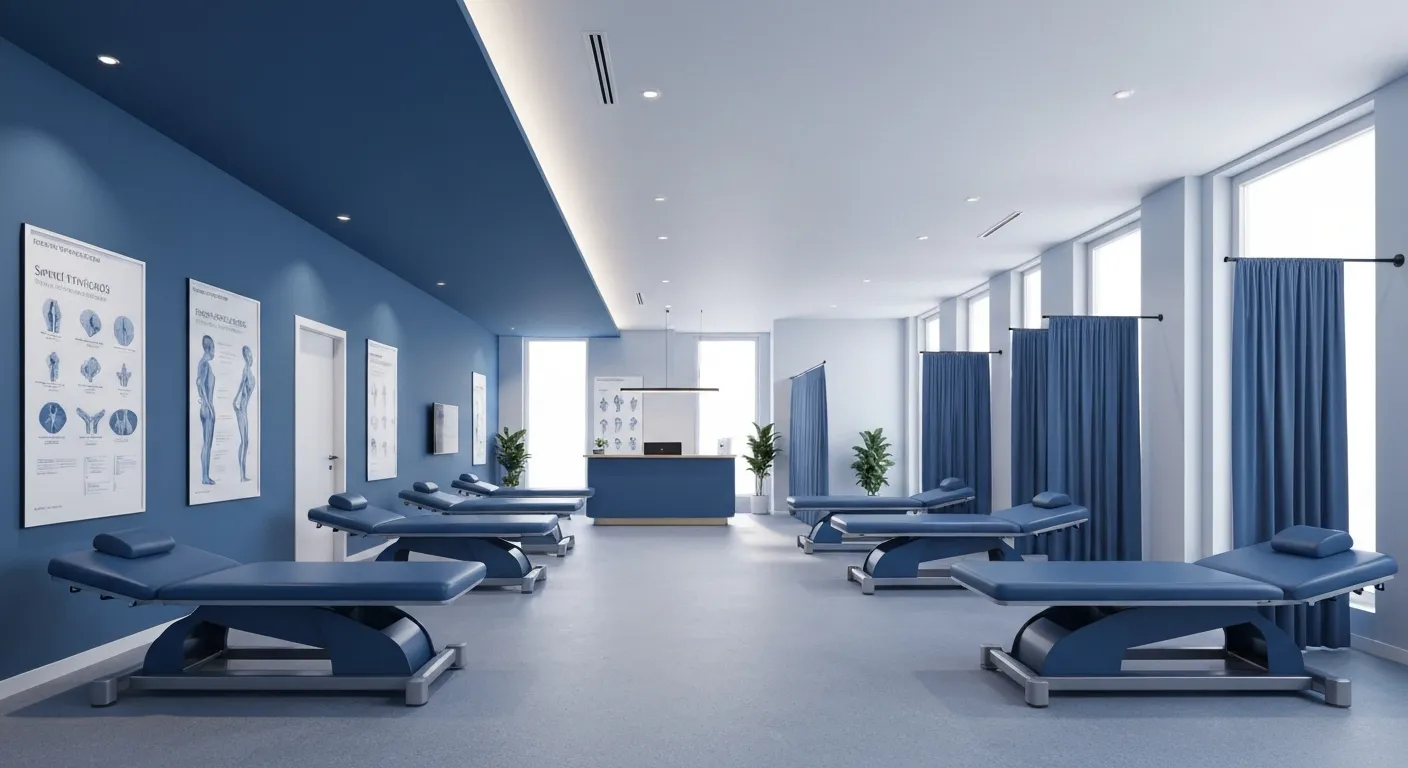
Simple Lifestyle Adjustments to Maintain a Healthy Spine

Personalized Nutritional Counseling for Improved Health Outcomes

Exploring Non-Surgical Treatments for Spine-Related Conditions

An Introduction to Spinal Decompression for Sciatica Patients

Transformative Success Stories: Patient Experiences with Chiropractic Treatments

Why Chiropractic Care Is Essential for Back Pain Relief

Addressing Underlying Causes Versus Symptom Management in Pain Care

The Role of Nutrition in Enhancing Chiropractic Treatment Effectiveness

Sciatica Treatment Options: Is Spinal Decompression Right for You?

Lifestyle Tips to Maintain a Healthy Spine and Prevent Back Issues

The Synergy Between Physiotherapy and Chiropractic Treatments

What Happens During Your Initial Chiropractic Consultation

Effective Corrective Exercises for Sustainable Pain Management

Taking a Root Cause Approach to Chronic Pain Management

Holistic Pain Management Techniques Without Surgery

How Patient Success Stories Validate Chiropractic Care Benefits

Spinal Decompression: Innovative Treatment for Sciatic Nerve Pain

Spinal Decompression Therapy: A Non-Invasive Approach to Sciatica Relief
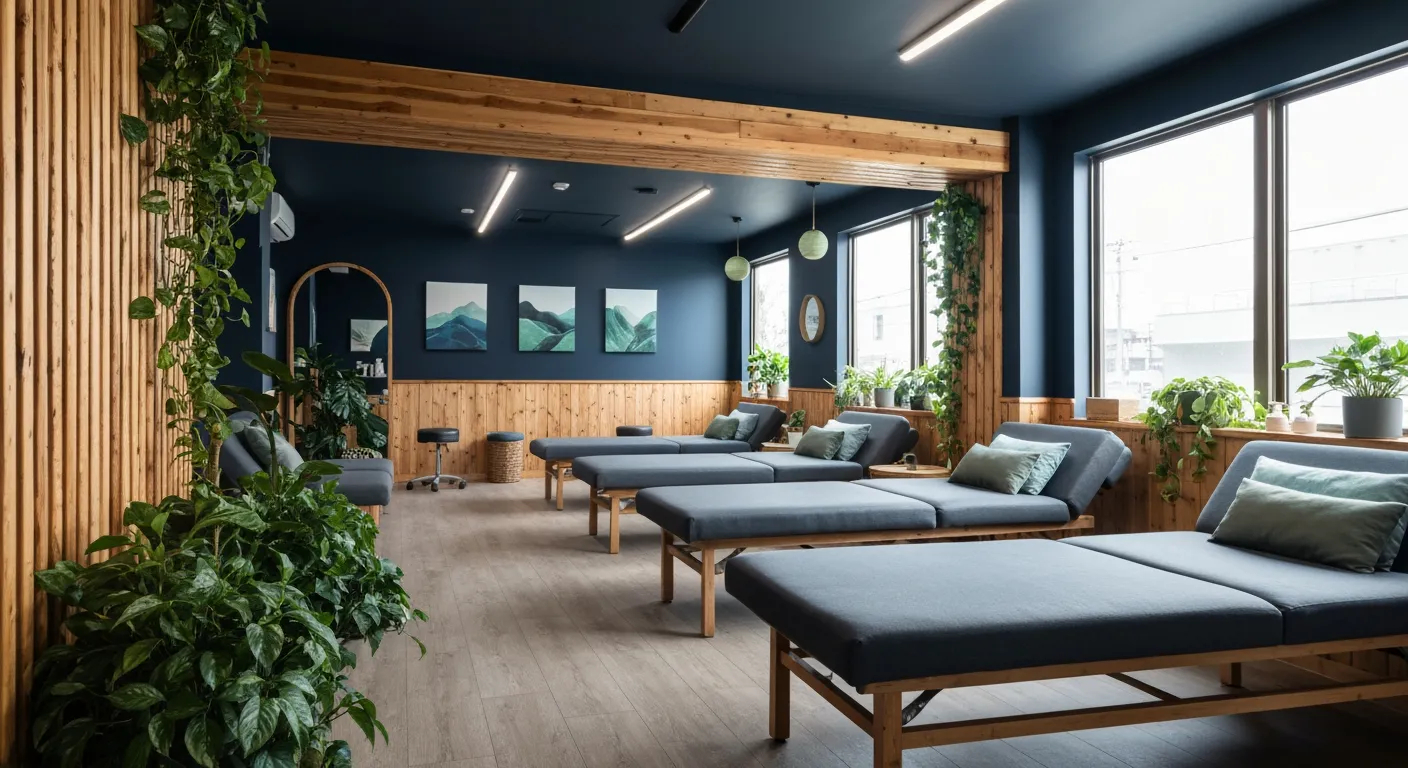
Exploring Holistic Approaches Beyond Surgery for Pain Relief

Practical Lifestyle Advice to Support a Healthy Spine Every Day

Corrective Exercise Routines Designed for Long-Term Pain Prevention

Real Patient Stories: Overcoming Chronic Pain with Chiropractic Care

Lifestyle Changes That Promote a Healthy Spine and Prevent Injury

How Addressing the Root Cause of Pain Leads to Lasting Relief

Non-Surgical Holistic Therapies to Manage Chronic Pain Effectively

Nutritional Counseling's Impact on Physical Health and Healing

Benefits of Regular Chiropractic Care for a Stronger Back

Your First Chiropractic Visit: What to Expect and How to Prepare

Patient Experiences: How Chiropractic Care Transformed Their Lives

Exploring Holistic, Non-Surgical Options for Pain Management

Combining Physiotherapy with Chiropractic Treatments for Enhanced Recovery

Holistic Treatments That Offer Alternatives to Surgery for Pain Relief

Corrective Exercise Strategies for Long-Term Spine Health

How Physiotherapy Complements Chiropractic Adjustments for Better Outcomes

First-Time Chiropractic Visitors: What You Should Know

Understanding the Importance of Treating Pain at Its Source

Adopting Lifestyle Changes to Support Your Spine's Wellness

Utilizing Physiotherapy to Enhance Chiropractic Treatment Outcomes

The Key Advantages of Chiropractic Care for Back Pain Sufferers

Why Focusing on Root Causes Improves Pain Treatment Success

Corrective Exercises That Promote Lasting Pain Relief and Mobility

Sciatica Relief Through Targeted Spinal Decompression Techniques
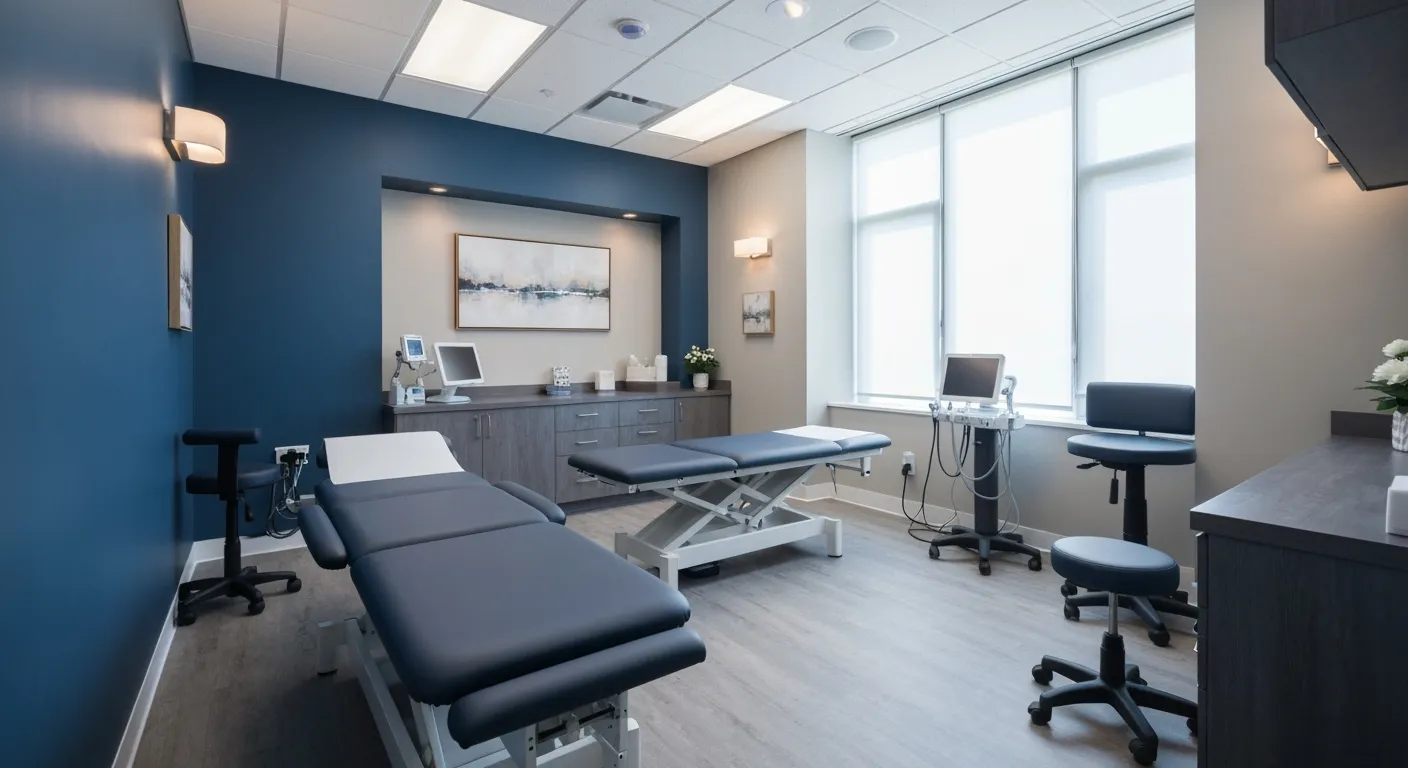
Preparing for Your First Chiropractic Appointment with Confidence
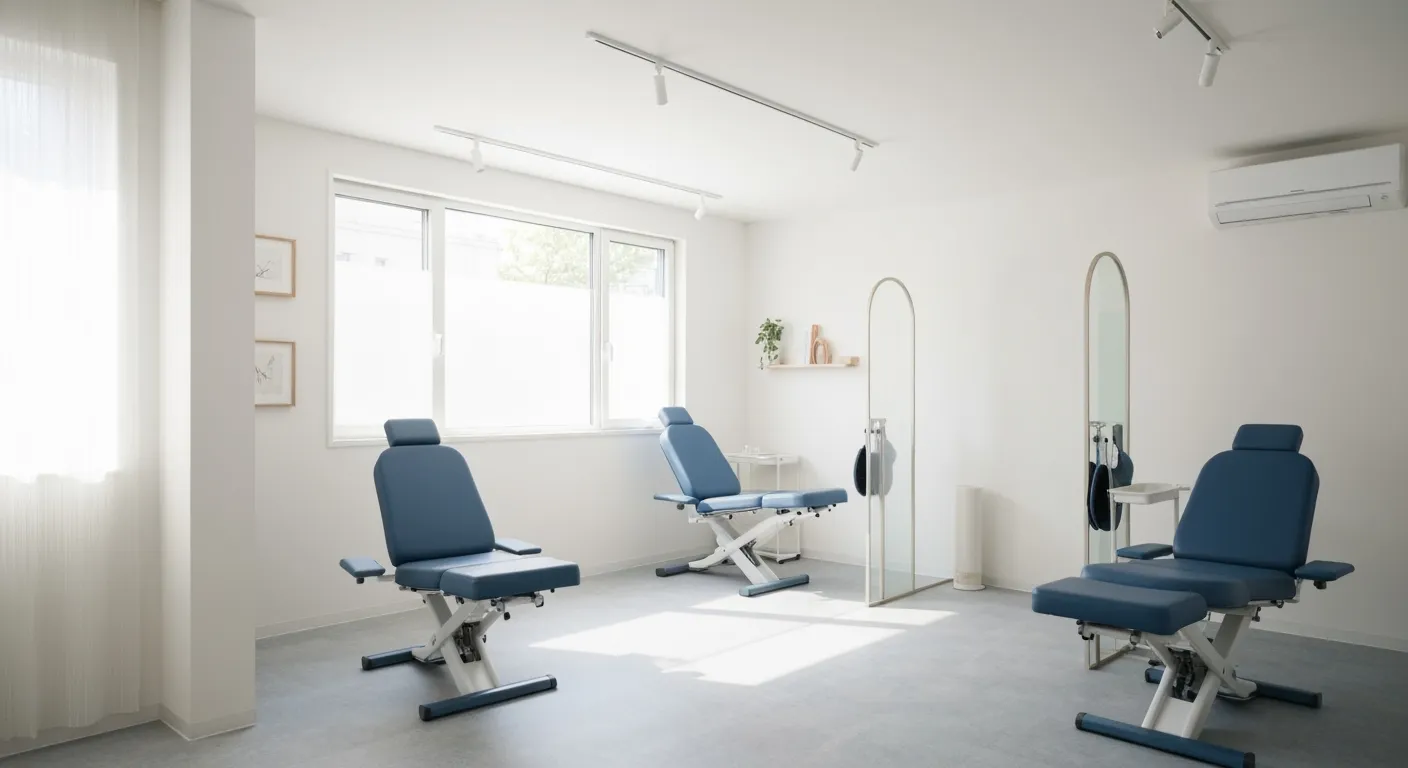
Healthy Lifestyle Habits for Maintaining Spinal Alignment

Success Stories Highlighting Chiropractic's Role in Pain Recovery

Top Benefits of Chiropractic Care for Chronic Back Pain

Nutrition Tips to Boost Your Overall Wellness and Recovery
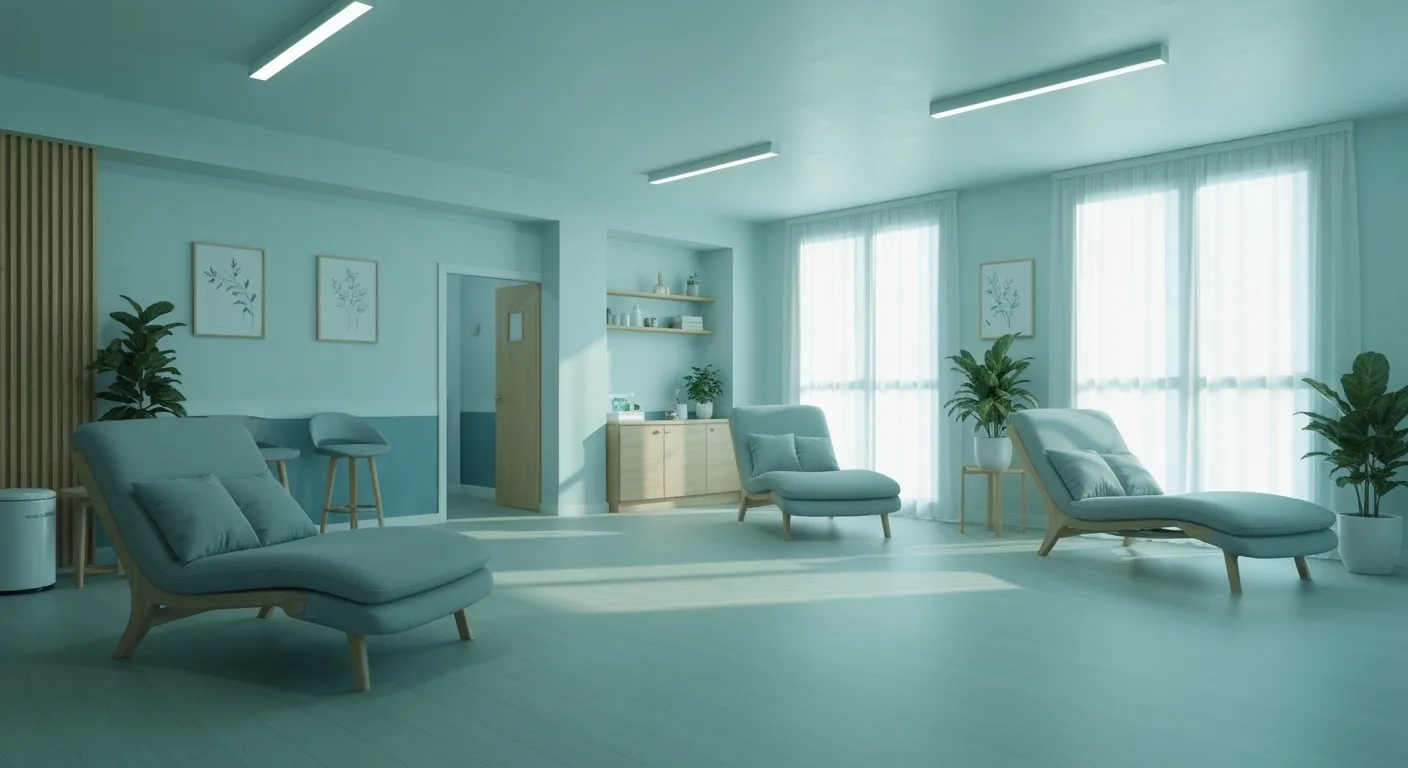
How Chiropractic Care Alleviates Back Pain Naturally

How Nutritional Counseling Supports Overall Wellness and Spine Health

Step-by-Step Guide to Your First Visit with a Chiropractor

Using Nutrition to Support Chiropractic and Overall Wellness

Integrating Physiotherapy in Your Chiropractic Healing Journey

How Physiotherapy Complements Chiropractic Adjustments for Faster Healing

Lifestyle Tips for Maintaining a Healthy Spine and Preventing Back Pain

Heartwarming Patient Testimonials Highlighting Chiropractic Success

How Proper Nutrition Supports Chiropractic and Physiotherapy Treatments

Combining Physiotherapy and Chiropractic Treatments for Optimal Recovery

Why Chiropractic Treatments Are Effective for Managing Back Pain

Choosing a Chiropractor: Tips for Finding a Trusted Provider

Integrating Physiotherapy and Chiropractic: Benefits and What to Expect

How Tailored Corrective Exercises Can Aid in Pain Management

Chiropractic Care: A Proven Solution for Alleviating Back Pain

What to Expect at Your First Chiropractic Visit: A Comprehensive Guide

The Importance of Root Cause Analysis in Effective Pain Management

The Role of Corrective Exercises in Sustaining Pain-Free Living

Combining Chiropractic and Physiotherapy for Comprehensive Pain Relief

How Addressing Underlying Causes Improves Pain Treatment Effectiveness

Maintaining Spinal Health Through Lifestyle Changes and Preventive Care

Understanding the Benefits of Chiropractic Adjustments for Back Pain Sufferers

Spinal Decompression Therapy: A New Hope for Sciatica Relief

Lifestyle Recommendations to Support a Healthy Spine and Reduce Pain

Choosing the Right Chiropractor: Key Factors to Consider Before Your First Appointment

Non-Invasive Treatment Alternatives: A Holistic Approach to Pain Relief

Corrective Exercises to Support Long-Term Relief from Chronic Pain

Exploring Non-Surgical Approaches to Spine Health and Wellness

Tips for Daily Habits That Keep Your Spine Strong

Success Stories: How Chiropractic Treatments Changed Lives

Why Focusing on the Root Cause of Pain Leads to Better Outcomes

Nutritional Counseling and Its Impact on Overall Wellness and Recovery

Patient Testimonials That Showcase the Power of Chiropractic Care

Preparing for Your First Chiropractic Appointment: What You Need to Know

Holistic Treatment Options: Beyond Surgery for Pain Relief

Holistic Pain Relief Methods That Avoid Surgery

Nutritional Strategies for Supporting Spine Health and Recovery

First Chiropractic Visit: What Happens and How to Prepare

Chiropractic Patient Success Stories: Inspiring Journeys to Wellness

Effectiveness of Spinal Decompression Therapy in Managing Sciatic Nerve Pain

Addressing Pain at Its Source: Why Treating the Root Cause Matters

Corrective Exercise Programs Designed for Long-Term Pain Prevention

Healthy Lifestyle Advice for Maintaining Spinal Alignment

Understanding Spinal Decompression as a Treatment for Sciatica Pain

Benefits of Chiropractic Care Specifically for Back Pain Relief

Understanding Gait Analysis in Physiotherapy

The Difference Between Muscle Soreness and Dysfunction

Workplace Stress Statistics: How Muscle Tension Impacts Productivity

How Physiotherapy Improves Mobility for Seniors

How to Communicate Pain Levels to Your Therapist Effectively

Physiotherapy Interventions for Balance and Fall Prevention

How Physiotherapy Helps Post-Surgical Recovery

